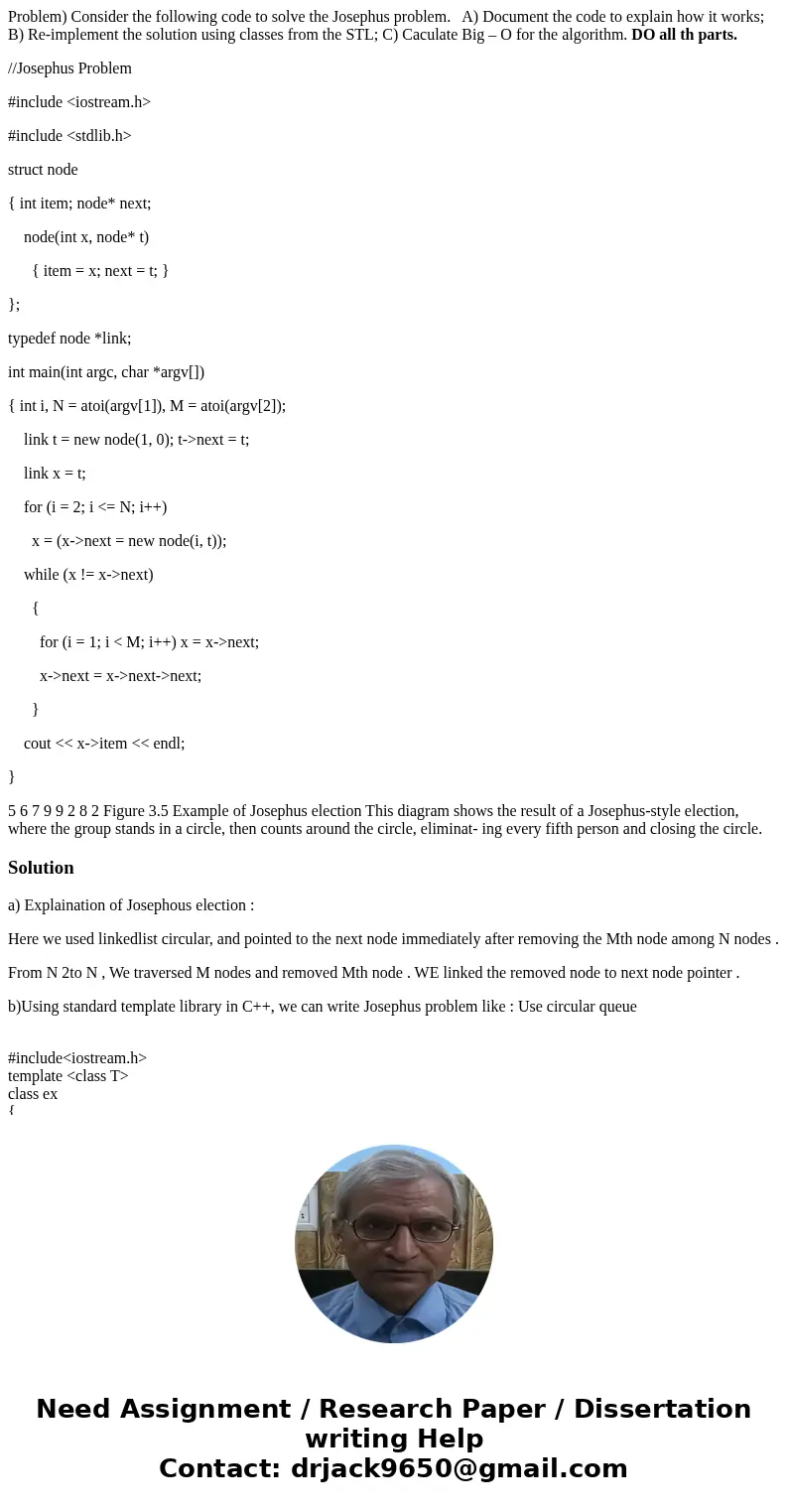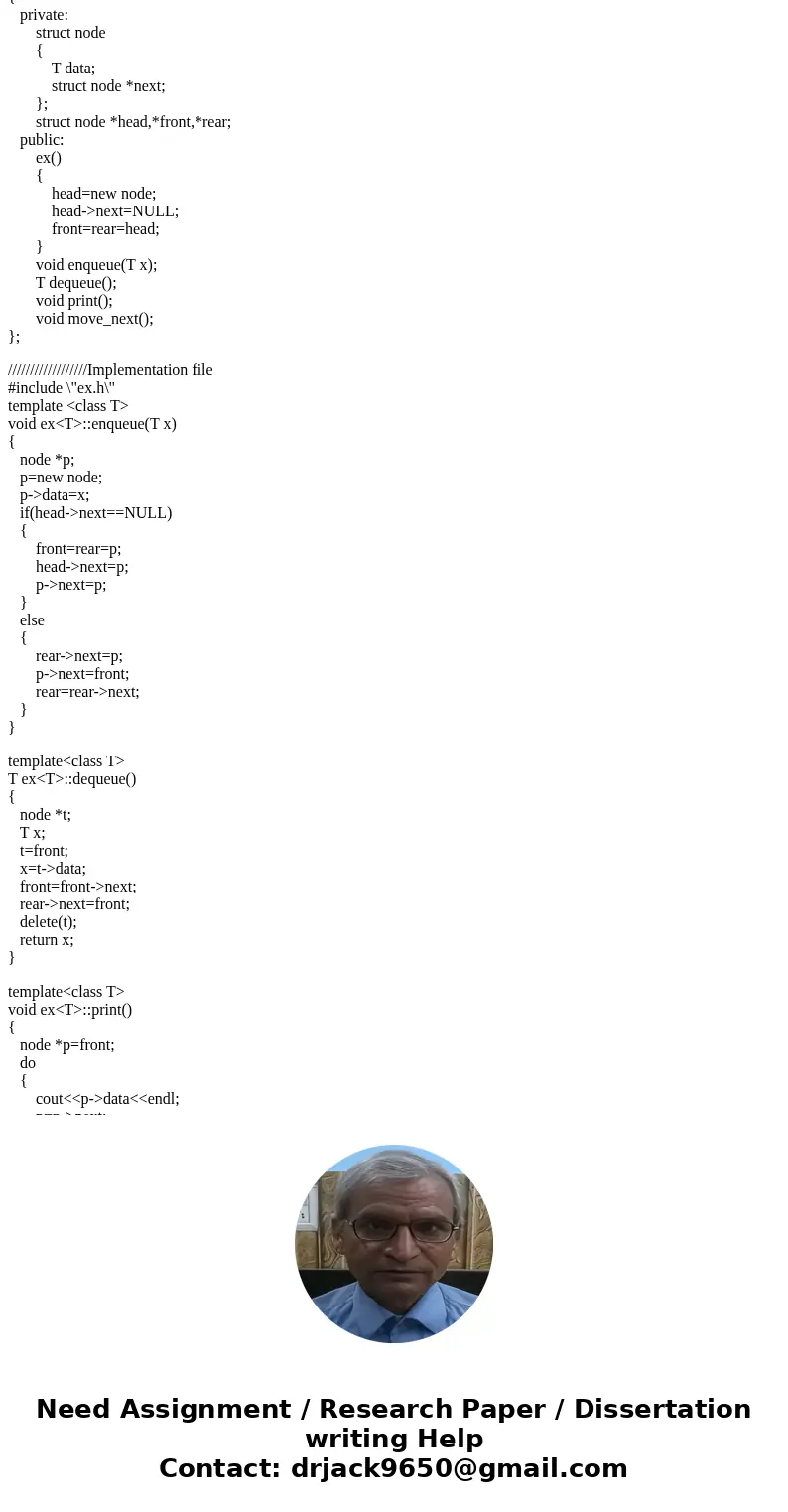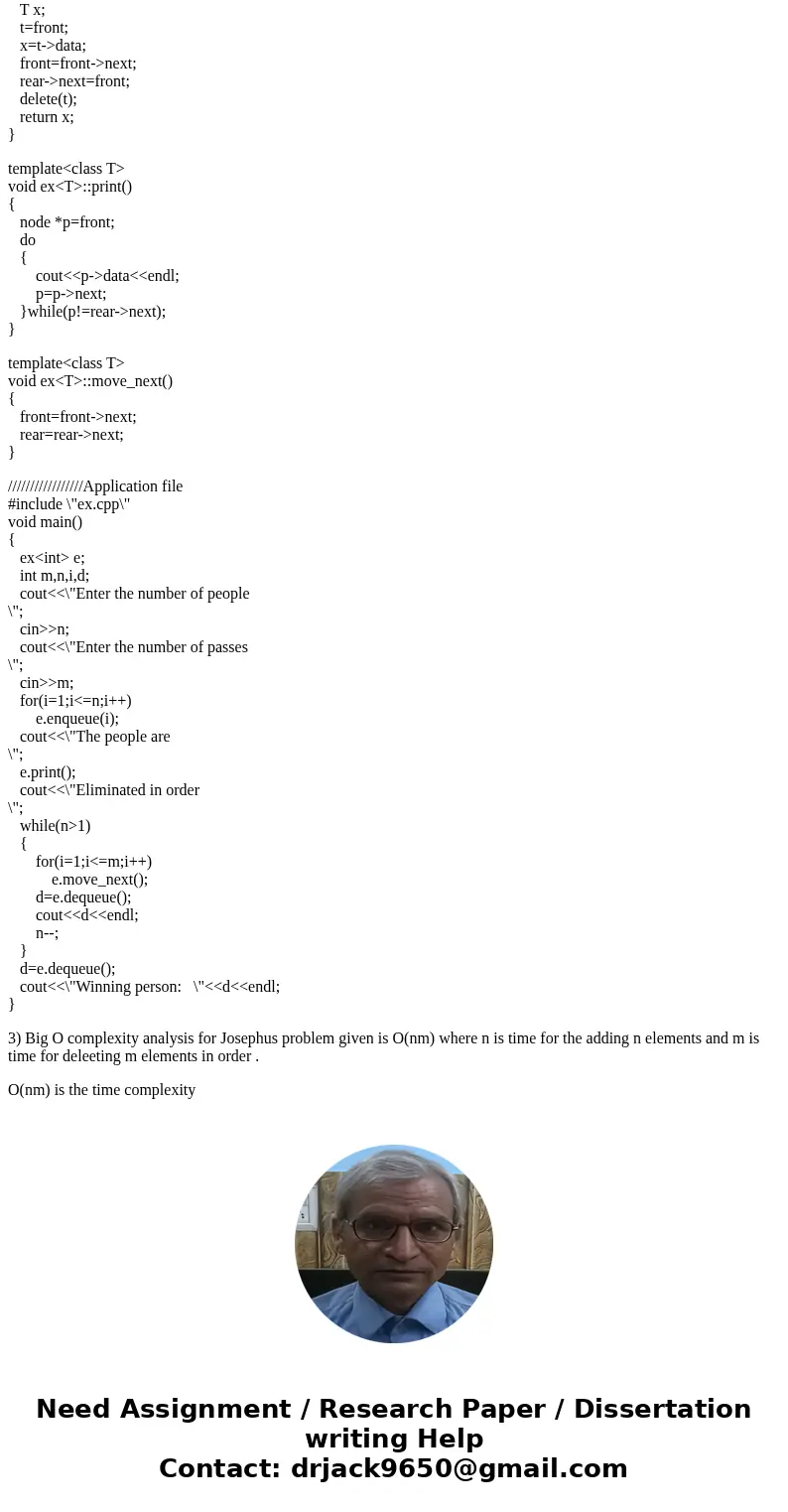Problem Consider the following code to solve the Josephus pr
Problem) Consider the following code to solve the Josephus problem. A) Document the code to explain how it works; B) Re-implement the solution using classes from the STL; C) Caculate Big – O for the algorithm. DO all th parts.
//Josephus Problem
#include <iostream.h>
#include <stdlib.h>
struct node
{ int item; node* next;
node(int x, node* t)
{ item = x; next = t; }
};
typedef node *link;
int main(int argc, char *argv[])
{ int i, N = atoi(argv[1]), M = atoi(argv[2]);
link t = new node(1, 0); t->next = t;
link x = t;
for (i = 2; i <= N; i++)
x = (x->next = new node(i, t));
while (x != x->next)
{
for (i = 1; i < M; i++) x = x->next;
x->next = x->next->next;
}
cout << x->item << endl;
}
5 6 7 9 9 2 8 2 Figure 3.5 Example of Josephus election This diagram shows the result of a Josephus-style election, where the group stands in a circle, then counts around the circle, eliminat- ing every fifth person and closing the circle.Solution
a) Explaination of Josephous election :
Here we used linkedlist circular, and pointed to the next node immediately after removing the Mth node among N nodes .
From N 2to N , We traversed M nodes and removed Mth node . WE linked the removed node to next node pointer .
b)Using standard template library in C++, we can write Josephus problem like : Use circular queue
#include<iostream.h>
template <class T>
class ex
{
private:
struct node
{
T data;
struct node *next;
};
struct node *head,*front,*rear;
public:
ex()
{
head=new node;
head->next=NULL;
front=rear=head;
}
void enqueue(T x);
T dequeue();
void print();
void move_next();
};
//////////////////Implementation file
#include \"ex.h\"
template <class T>
void ex<T>::enqueue(T x)
{
node *p;
p=new node;
p->data=x;
if(head->next==NULL)
{
front=rear=p;
head->next=p;
p->next=p;
}
else
{
rear->next=p;
p->next=front;
rear=rear->next;
}
}
template<class T>
T ex<T>::dequeue()
{
node *t;
T x;
t=front;
x=t->data;
front=front->next;
rear->next=front;
delete(t);
return x;
}
template<class T>
void ex<T>::print()
{
node *p=front;
do
{
cout<<p->data<<endl;
p=p->next;
}while(p!=rear->next);
}
template<class T>
void ex<T>::move_next()
{
front=front->next;
rear=rear->next;
}
/////////////////Application file
#include \"ex.cpp\"
void main()
{
ex<int> e;
int m,n,i,d;
cout<<\"Enter the number of people
\";
cin>>n;
cout<<\"Enter the number of passes
\";
cin>>m;
for(i=1;i<=n;i++)
e.enqueue(i);
cout<<\"The people are
\";
e.print();
cout<<\"Eliminated in order
\";
while(n>1)
{
for(i=1;i<=m;i++)
e.move_next();
d=e.dequeue();
cout<<d<<endl;
n--;
}
d=e.dequeue();
cout<<\"Winning person: \"<<d<<endl;
}
3) Big O complexity analysis for Josephus problem given is O(nm) where n is time for the adding n elements and m is time for deleeting m elements in order .
O(nm) is the time complexity



 Homework Sourse
Homework Sourse